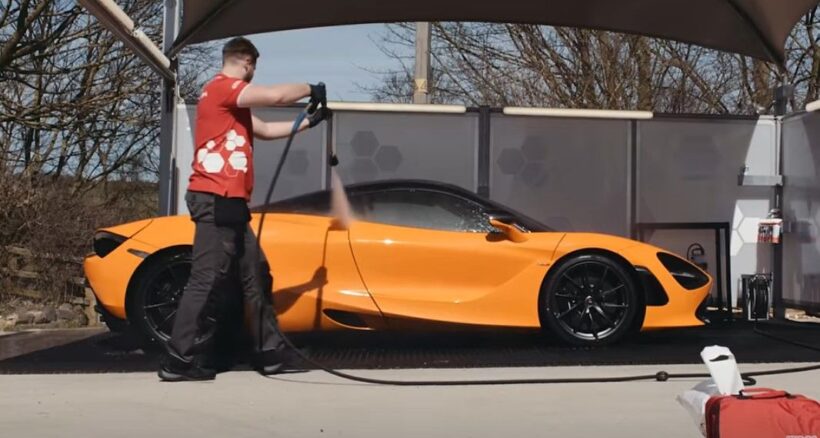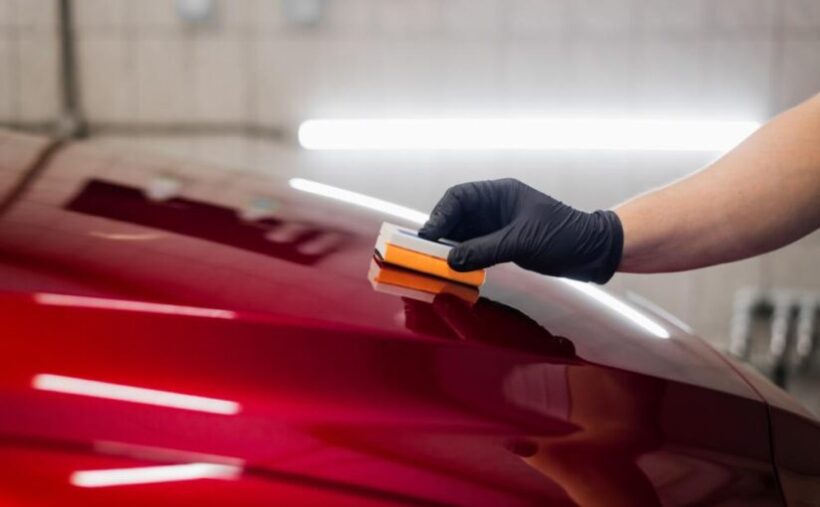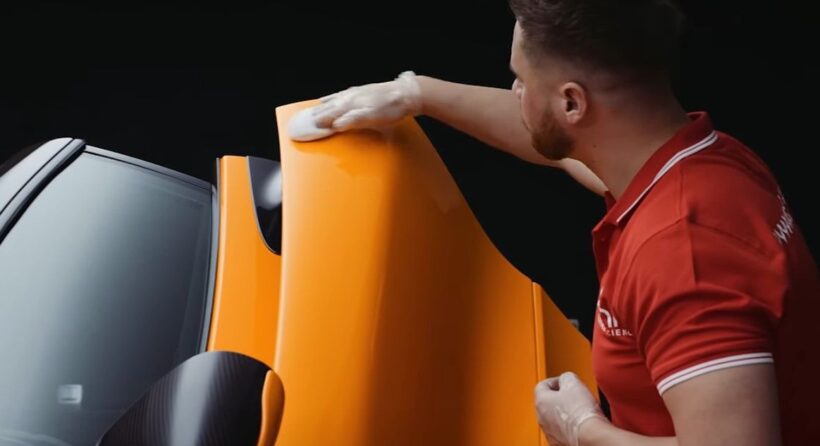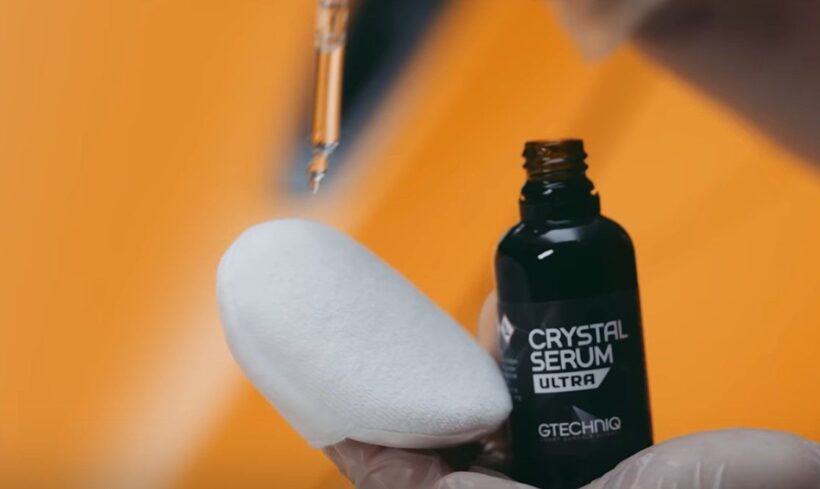Ceramic coatings have become increasingly popular among UK motorists, with promises of long-term protection, easier cleaning, and an eye-catching, glossy finish. Yet despite their rising status as a must-have detailing solution, ceramic coatings are also surrounded by a number of myths and misconceptions.
For car enthusiasts and everyday drivers alike, separating fact from fiction is essential. Misunderstanding what ceramic coatings can realistically achieve often leads to disappointment or misuse. Whether you’re considering ceramic coating your daily driver, weekend classic, or performance car, this guide will help you make an informed decision.
We’re here to clear the fog and explore the truth behind some of the most common myths about ceramic coatings.
Myth 1: Ceramic Coatings Mean You Never Have to Wash Your Car Again

This is, without question, one of the most widespread myths—and unfortunately, one of the most misleading. The idea that a ceramic-coated vehicle remains eternally clean is a complete misconception.
The reality: Ceramic coatings are hydrophobic, meaning they repel water and make it more difficult for dirt, grime, and contaminants to bond to the surface. As a result, cleaning becomes faster, and your car stays cleaner for longer. However, that doesn’t eliminate the need for washing altogether. Bird droppings, tree sap, industrial fallout, and even road salt will still find their way onto your car. Regular cleaning is still required to maintain the coating and your vehicle’s appearance.
What ceramic coatings really do is make maintenance easier and more efficient, allowing for safer and less frequent washes with reduced risk of scratching the paintwork.
Myth 2: Ceramic Coatings Are Completely Scratch-Proof
This myth stems from exaggerated marketing claims and misunderstanding of the term “scratch-resistant”. Many believe that ceramic coatings offer bulletproof protection from scratches, stone chips, and abrasions.
The reality: Ceramic coatings can add a small degree of resistance to fine swirls or light scratches caused by improper washing or dust particles. However, they won’t stop deeper scratches from car doors, stones, key marks, or accidents. No coating is impenetrable—certainly not to sharp objects or high-impact contact.
Instead, think of ceramic coatings as a sacrificial layer. They absorb minor abuse so that your vehicle’s paint underneath remains unharmed for longer. But they’re no replacement for cautious driving, careful parking, or proper maintenance techniques.
Myth 3: All Ceramic Coatings Perform the Same
If you’ve ever browsed car care forums or online retailers, you’ll know there’s a wide range of ceramic coating products available—ranging from high-end professional-grade formulas to quick DIY sprays.
The reality: Not all ceramic coatings are created equal. Differences in chemical composition, SiO2 content (the active ceramic ingredient), application method, and durability vary significantly. Entry-level products might offer short-term protection and easier application, while professional-grade coatings require thorough preparation and expertise—but deliver far superior results in terms of gloss, resistance, and longevity.
Product quality and application technique both matter. If you’re looking for long-term protection and an elite finish, consider reputable ranges like Gtechniq’s ceramic coatings, which are engineered for durability and tested under a wide range of conditions.
Myth 4: Waxing Over a Ceramic Coating is Redundant

Many people assume that once their car is ceramic-coated, they must never use wax again. While ceramic coatings often outperform wax in terms of protection, there’s still a place for wax in the enthusiast’s toolkit.
The reality: Applying wax on top of a ceramic coating won’t necessarily add extra protection, but it can enhance visual appeal. Some car owners prefer the warmer, deeper glow that traditional wax provides—especially on darker paintwork. As long as the wax is ceramic-compatible and not abrasive, layering it over a cured coating is entirely fine.
That said, it’s not a necessary step and is purely optional depending on personal preference. The ceramic coating itself is designed to stand alone.
Myth 5: DIY Application Delivers the Same Results as Professional Installation
With the rise of DIY ceramic coating kits, it’s tempting to think anyone can achieve professional results at home. These kits are often marketed as “easy to use” and “foolproof”, but there are still significant risks involved.
The reality: Application requires careful surface preparation—including washing, decontamination, and sometimes paint correction—to ensure the coating bonds properly. Poor preparation or rushed application can result in high spots, hazing, or streaking, all of which can be tricky to fix once cured.
While it is possible to apply coatings at home, professional installers offer the benefit of experience, proper tools, controlled environments, and often access to higher-end, more durable products not sold directly to consumers.
If you’re confident in your skills and don’t mind the prep work, a DIY kit might suit you. If you’re working with a valuable or brand-new car, professional application is likely to deliver more reliable results.
Myth 6: Ceramic Coatings Last Forever
Many people believe that a single ceramic coating application will keep their car protected for life. While it’s true that ceramic coatings are longer-lasting than wax or sealants, they aren’t a permanent solution.
The reality: Lifespan depends on several factors, including:
- Product quality
- Application method
- Exposure to weather and contaminants
- Driving frequency
- Maintenance routine
A professional-grade coating might last 3–5 years, or even longer with proper care. Lower-tier DIY coatings may only offer protection for 6 to 12 months. However, no coating is immune to time and wear. Eventually, even the best ceramic coatings degrade and require either rejuvenation or reapplication.
Annual inspections and occasional top-ups using compatible products are a smart way to prolong your coating’s life.
Myth 7: Ceramic Coating is Only for Luxury or Sports Cars

It’s easy to assume that ceramic coatings are a luxury reserved for expensive or performance-oriented vehicles. After all, why invest in high-end protection for a modest family car?
The reality: Ceramic coatings offer value to any vehicle owner. Whether you’re driving a £60,000 sports car or a £6,000 hatchback, preserving your vehicle’s paint, improving its resale value, and simplifying cleaning are worthwhile benefits.
In fact, many daily drivers benefit more from ceramic coatings, since they spend more time exposed to weather, car parks, motorway spray, and pollution.
So, Is Ceramic Coating Right for You?
Ceramic coatings are not miracle products, but they are a significant leap forward in paint protection technology. They won’t replace your car wash, prevent all damage, or last forever. But they will make your car easier to maintain, keep it looking shinier for longer, and offer long-term defence against common environmental hazards.
If you’re someone who values your car’s appearance, wants to reduce how often you need to wash it, or simply wants a longer-lasting alternative to waxing, ceramic coatings are absolutely worth considering.
Final Thoughts

When it comes to car care, knowledge is power. Understanding the realities of ceramic coatings helps you make better choices, avoid disappointment, and get the most out of your investment.
By steering clear of exaggerated claims and understanding both the strengths and limitations of this technology, you’ll be better equipped to take advantage of what ceramic coatings have to offer—on your terms.
Whether you choose to go DIY or opt for professional installation, choose products from trusted providers, maintain them properly, and enjoy the lasting benefits of a beautifully protected car.

